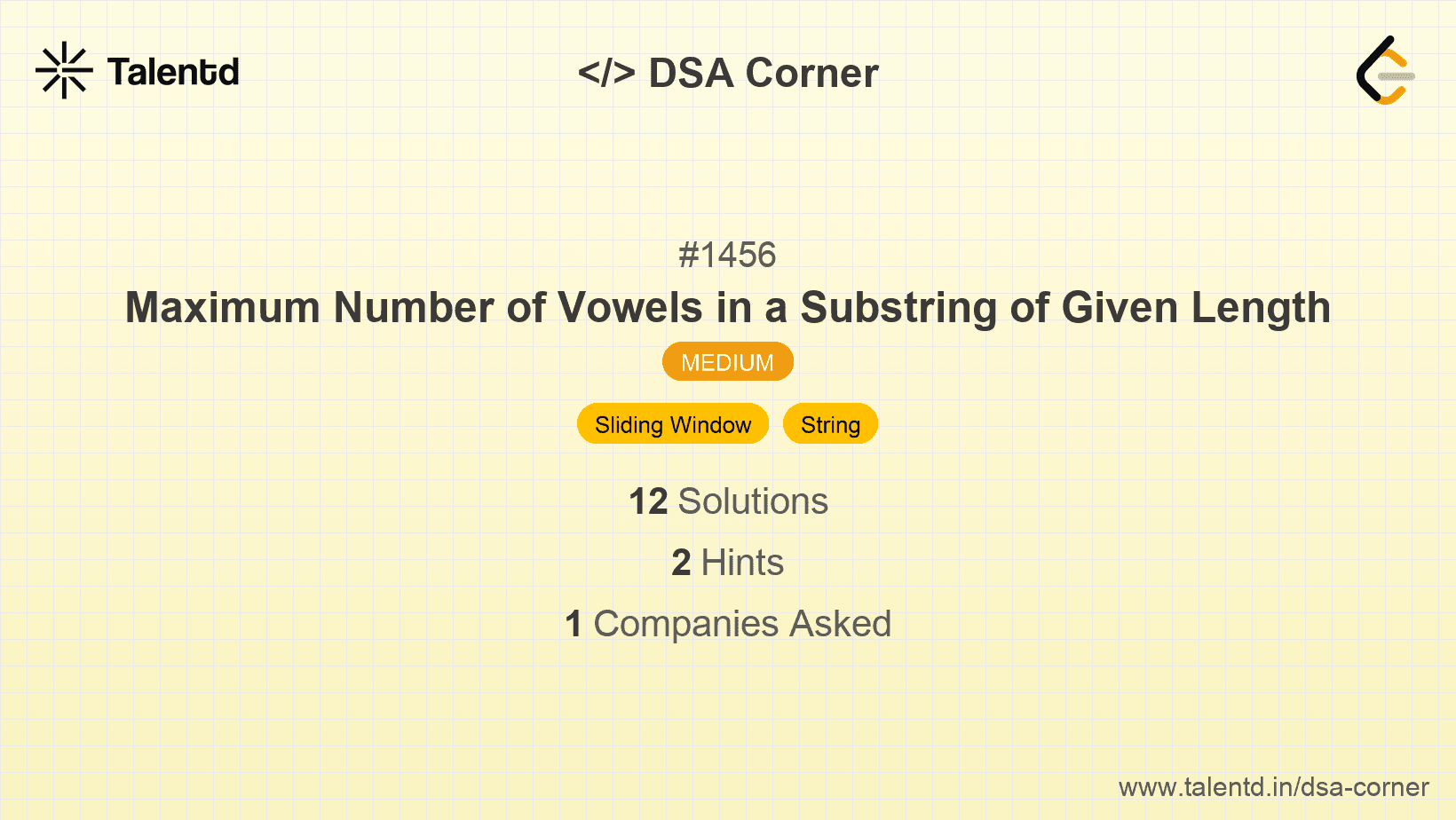
Sponsored
Sponsored
This approach uses the sliding window technique to efficiently find the maximum number of vowels in any substring of length k.
We first calculate the number of vowels in the initial window of length k. Then, for each subsequent character, we slide the window by one character to the right: we remove the character that goes out of the window and add the one that comes into the window, updating our vowel count accordingly.
This ensures that we examine each character in the string only once, leading to an O(n) time complexity.
Time Complexity: O(n), where n is the length of the string. We iterate through the string with a constant number of operations for each character.
Space Complexity: O(1), as we use a fixed amount of extra space.
1def maxVowels(s: str, k: int) -> int:
2 vowels = set('aeiou')
3 max_count = current_count = sum(1 for
Python's set data structure aids rapid lookup of vowels. The code calculates initial vowel counts and then iterates over the rest of the string. For each position, we adjust current_count for the character added to the window and the one removed from it, updating max_count appropriately to reflect the highest vowel count seen in a window.
Another way to tackle this problem is to use a combination of prefix sums and binary search to precompute regions of vowels.
First, we establish a prefix sum array that accumulates the number of vowels encountered at each character index in the string. Then, we use a binary search within this prefix sum to efficiently find the maximum number of vowels in any moving window of length k.
This approach is more complex and is generally less optimal than the sliding window approach but provides an alternative methodology.
Time Complexity: O(n), for prefix sum construction and analysis.
Space Complexity: O(n), for the prefix sum array.
1def maxVowels(s: str, k: int) -> int:
2 n = len(s)
3 prefix = [0] * (n + 1)
4
5 for i in range(n):
6 prefix[i + 1] = prefix[i] + (s[i] in 'aeiou')
7
8 max_count = 0
9
10 for i in range(k, n + 1):
11 max_count = max(max_count, prefix[i] - prefix[i - k])
12
13 return max_count
14
15# Example usage
16print(maxVowels("abciiidef", 3))The Python solution constructs a prefix sum array to accumulate counts of vowels. The maximum number of vowels in any k-length substring is determined from differences in prefix sums separated by k, using these differences to represent vowel counts within any window.